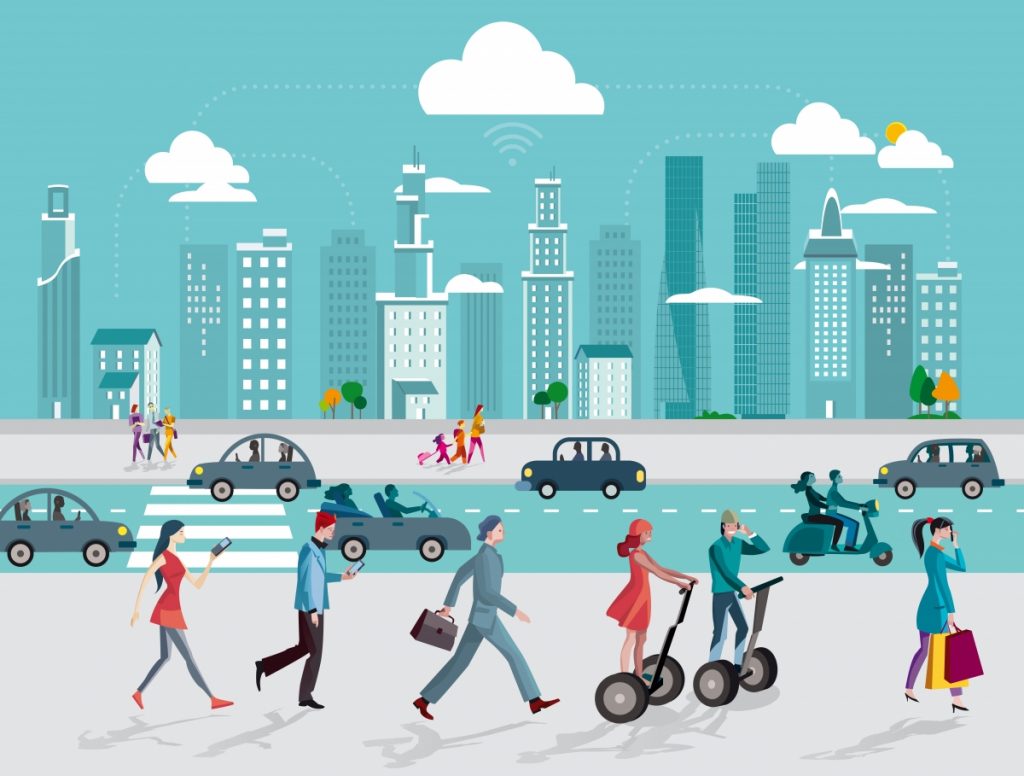
How Technology is Transforming Logistics
The logistics industry has undergone a significant transformation in recent years, thanks to the rapid advancement of technology. The traditional ways of managing supply chains, tracking shipments, and optimizing routes have given way to more efficient, cost-effective, and data-driven methods. In this article, we’ll explore the various ways in which technology is transforming logistics and revolutionizing the way goods are moved around the world.
1. Digitization of Supply Chains
One of the most significant impacts of technology on logistics is the digitization of supply chains. With the help of digital platforms, companies can now track their shipments in real-time, manage inventory levels, and optimize routes for faster delivery. This increased visibility has enabled companies to respond quickly to changes in demand, reduce inventory costs, and improve customer satisfaction.
Digital platforms have also enabled the integration of different stakeholders in the supply chain, such as suppliers, manufacturers, logistics providers, and customers. This collaboration has led to improved communication, reduced errors, and increased efficiency.
2. Artificial Intelligence (AI) and Machine Learning (ML)
AI and ML are being used extensively in logistics to analyze data, identify patterns, and make predictions. For example, AI-powered algorithms can analyze traffic patterns, weather conditions, and other factors to optimize routes for faster delivery. They can also predict demand levels, enabling companies to adjust their inventory levels accordingly.
ML algorithms can also be used to analyze data from sensors and IoT devices to detect anomalies in shipments, such as changes in temperature or humidity. This enables companies to take corrective action immediately, reducing the risk of damage or loss.
3. IoT and Sensors
The use of IoT devices and sensors has revolutionized the way goods are tracked and monitored. These devices can be attached to shipments, pallets, or containers, and can transmit data in real-time, enabling companies to track their goods at every stage of the journey.
Sensors can also be used to monitor conditions such as temperature, humidity, and vibration, enabling companies to ensure that their goods are stored and transported under optimal conditions.
4. Robotics and Automation
Robotics and automation are being used to streamline warehouse operations, improve efficiency, and reduce labor costs. Autonomous robots can be used to pick and pack orders, reducing the risk of human error and increasing the speed of fulfillment.
Automated guided vehicles (AGVs) are also being used to transport goods around warehouses, reducing the risk of accidents and improving efficiency.
5. Big Data Analytics
Big data analytics has enabled companies to analyze large amounts of data to identify trends, patterns, and insights. This enables them to make data-driven decisions, optimize their operations, and improve customer satisfaction.
Big data analytics can be used to analyze data from various sources, including sensors, IoT devices, and social media platforms. This enables companies to gain a deeper understanding of their customers’ behavior, preferences, and needs.
6. Cloud Computing
Cloud computing has enabled companies to store and process large amounts of data in a scalable, flexible, and cost-effective manner. This has enabled companies to access their data from anywhere, at any time, and to collaborate with their partners and stakeholders more effectively.
Cloud-based platforms have also enabled companies to scale up or down quickly, depending on changing demand levels, reducing the need for costly infrastructure investments.
7. Blockchain Technology
Blockchain technology has the potential to revolutionize the logistics industry by providing a secure, transparent, and tamper-proof way of tracking goods. Blockchain technology can be used to create an immutable record of transactions, enabling companies to track their goods from origin to delivery.
Blockchain technology can also be used to facilitate payment and documentation, reducing the risk of fraud and increasing the speed of transactions.
8. Autonomous Vehicles
Autonomous vehicles are being used to transport goods, reducing the need for human intervention and increasing safety. Autonomous vehicles can also optimize routes in real-time, reducing fuel consumption and lowering emissions.
Autonomous vehicles are being used extensively in warehouses and distribution centers, enabling companies to reduce labor costs and improve efficiency.
9. Augmented Reality (AR) and Virtual Reality (VR)
AR and VR are being used to improve the logistics experience for customers. For example, AR can be used to provide customers with a virtual tour of their shipment, enabling them to track their goods in real-time.
VR can be used to provide customers with a immersive experience, enabling them to visualize their shipments and interact with them in a more engaging way.
10. Cybersecurity
As the logistics industry becomes increasingly dependent on technology, cybersecurity is becoming a major concern. Companies are investing heavily in cybersecurity measures to protect their data and systems from cyber threats.
Cybersecurity measures include encryption, firewalls, and intrusion detection systems, enabling companies to protect their data and systems from unauthorized access.
Conclusion
Technology is transforming the logistics industry in a big way, enabling companies to improve efficiency, reduce costs, and enhance customer satisfaction. From digitization of supply chains to the use of autonomous vehicles, technology is revolutionizing the way goods are moved around the world.
As technology continues to evolve, we can expect to see even more innovative solutions emerge in the logistics industry. Companies that embrace these changes will be well-positioned to succeed in a rapidly changing environment, while those that resist change may find themselves left behind.
By leveraging technology, companies can gain a competitive edge, improve their bottom line, and build stronger relationships with their customers. As the logistics industry continues to evolve, one thing is clear – technology will play a central role in shaping its future.





